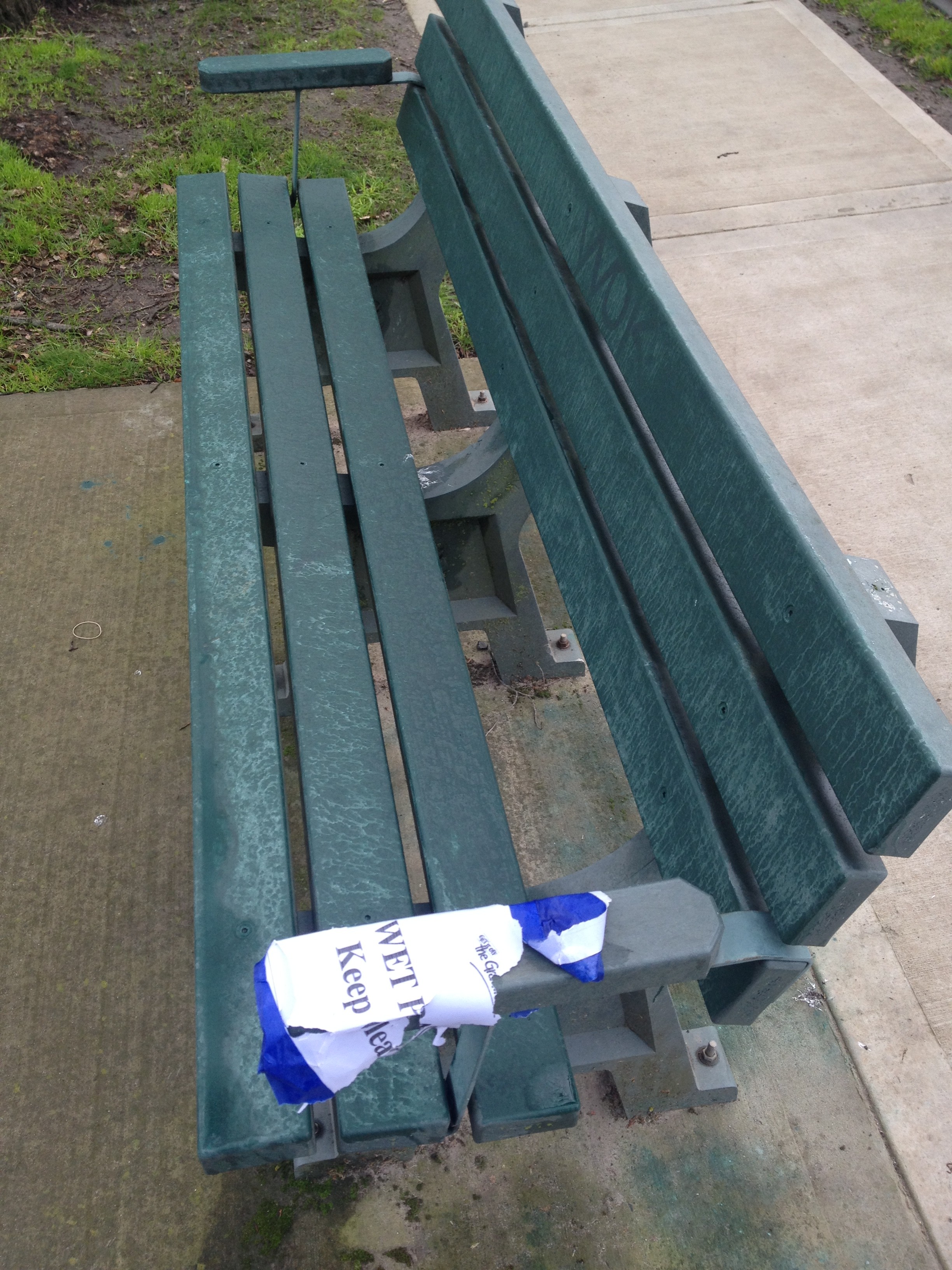Every day, on my walk to the train station for work, I pass a bench with a peculiar sight. A faded notice is attached to the seat, a relic from what seems like ages ago, warning people of “Wet paint.”
 Faded 'Wet Paint' Sign on a Public Bench: An Example of Neglected Public Notices
Faded 'Wet Paint' Sign on a Public Bench: An Example of Neglected Public Notices
However, the bench looks as if it hasn’t seen a fresh coat of paint in decades. The sign, weathered by countless weeks of rain, hail, and wind, is a testament to time’s passage rather than a recent paint job.
This brings to mind a common question: why is it that those who put up notices rarely, if ever, take them down?
This phenomenon isn’t isolated to just this bench. It’s a widespread occurrence. Public bulletin boards are often cluttered with announcements for meetings that concluded years prior. Flyers promoting guest speakers at events from months past remain stubbornly in place. Even websites are guilty, displaying “upcoming events” that have long since occurred.
At the university where I work, the practice is similar. When a classroom change or class cancellation happens, in addition to email notifications, a notice is typically pinned to the classroom door. This is a practical measure, acknowledging that not all students are glued to their inboxes.
Yet, weeks after the event, these notices often persist. A sign declaring “Zoology 101 is cancelled today, July 20th” might linger on the door well into September. More often than not, I find myself taking on the task of removing these outdated reminders and discarding them.
It makes one wonder if the individuals who are prone to leaving these aged notices are the same ones who leave their empty coffee cups on podiums, their pens, discarded food wrappers, and half-empty water bottles scattered on tables, or even stick their used chewing gum under surfaces.
In my opinion, neglecting to remove old notices, whether physical or digital, is simply another form of littering. And unfortunately, we already have more than enough of that in our public spaces.